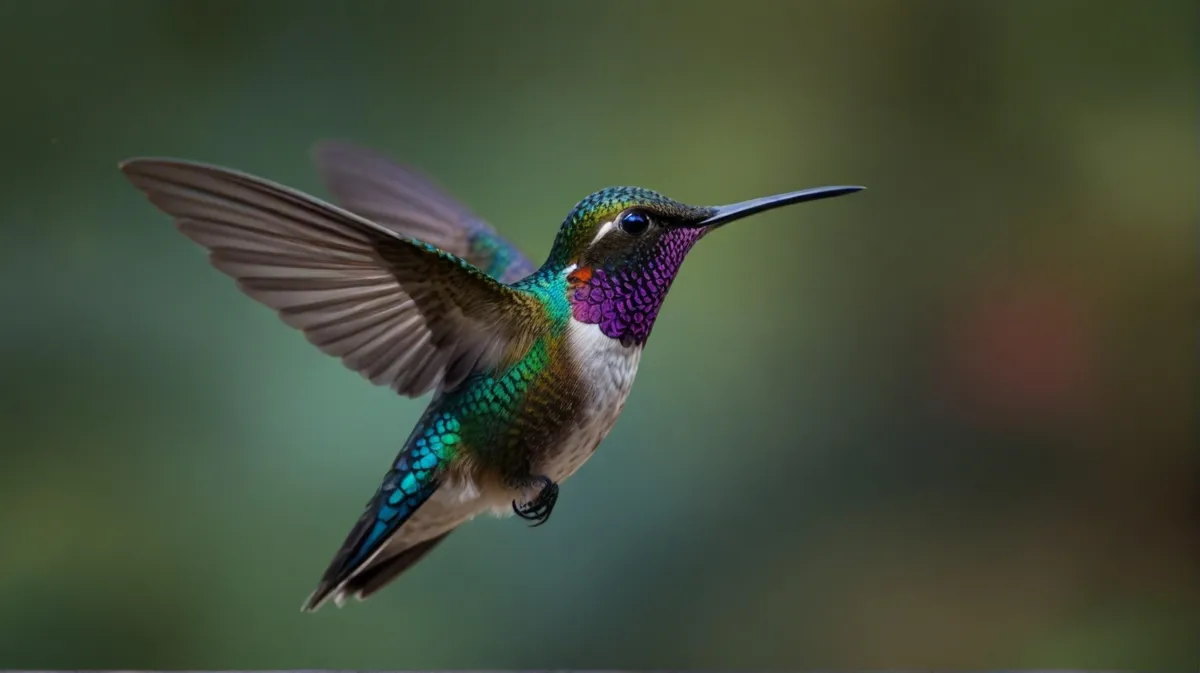
Hummingbird Gardens
The Hummingbirds of Colorado: Nature's Tiny Jewels
Colorado's diverse landscapes, from its alpine meadows to the arid plains, offer a stunning backdrop for wildlife enthusiasts. Among the state's most captivating creatures are its hummingbirds. These tiny, iridescent birds, with their rapid wingbeats and vibrant colors, are a sight to behold. If you're a bird lover or simply someone who appreciates the wonders of nature, the hummingbirds of Colorado offer a fascinating glimpse into the beauty and complexity of avian life.
A Variety of Species
While there are over 300 species of hummingbirds in the Americas, only a few are commonly found in Colorado. The most notable among them include the Broad-tailed Hummingbird, Rufous Hummingbird, and the Black-chinned Hummingbird.
Broad-tailed Hummingbird: This species is the most widespread in Colorado. The males are easily recognized by their shimmering rose-magenta throat, known as a gorget, and their distinctive metallic trill created by their wing feathers. Broad-tailed Hummingbirds are often seen at high elevations, from 7,000 to 10,000 feet, making their homes in mountain meadows and forests.
Rufous Hummingbird: Known for their fiery temperament and vivid coloring, Rufous Hummingbirds are fearless defenders of their territory. Males have a striking orange-red gorget, and their migration is one of the longest of any hummingbird, covering over 3,000 miles from Mexico to Alaska. In Colorado, they pass through during their migration, particularly in late summer.
Black-chinned Hummingbird: Less common than the Broad-tailed, the Black-chinned Hummingbird can still be spotted in the lower elevations of Colorado, especially in the southern and western parts of the state. Males are identified by their black chin and a thin strip of iridescent purple at the base of the throat.
Habitat and Behavior
Hummingbirds are incredibly adaptable, thriving in a variety of habitats across Colorado. They are most commonly found in areas with abundant flowers, where they feed on nectar. These birds play a crucial role as pollinators, transferring pollen from flower to flower as they feed, helping maintain the health of local ecosystems.
The feeding habits of hummingbirds are nothing short of remarkable. Their wings beat at a staggering 50 to 80 times per second, allowing them to hover in place as they sip nectar. This high-energy lifestyle requires them to consume up to half their body weight in food each day, including insects and spiders for protein.
Attracting Hummingbirds to Your Garden
Many Coloradans take delight in attracting hummingbirds to their gardens. If you want to bring these tiny jewels closer to home, consider the following tips:
Plant Native Flowers: Hummingbirds are drawn to brightly colored, tubular flowers that are rich in nectar. Some native Colorado plants that attract hummingbirds include columbine, bee balm, penstemon, and trumpet vine.
Provide Feeders: A simple sugar-water solution (1 part sugar to 4 parts water) can supplement the natural nectar in your garden. Be sure to clean the feeders regularly to prevent mold and bacteria growth.
Create a Water Source: Hummingbirds love shallow water sources for bathing. A mister or shallow birdbath with moving water can be particularly attractive.
Avoid Pesticides: Pesticides can harm hummingbirds and reduce the insect population they rely on for protein.
Conservation Concerns
While hummingbirds are generally resilient, they face threats from habitat loss, climate change, and the use of pesticides. Colorado's rapid development and changes in land use can disrupt the natural habitats that these birds rely on. Gardeners and homeowners can play a role in conservation by planting native species, avoiding chemicals, and providing safe spaces for these birds to feed and rest.
Conclusion
The hummingbirds of Colorado are more than just a beautiful sight; they are an essential part of the state's ecosystem. Their presence adds vibrancy to our gardens and wild spaces, and their role as pollinators helps sustain the diverse plant life of the region. By understanding and supporting these tiny creatures, we contribute to the preservation of the natural beauty that makes Colorado such a special place. So next time you spot a hummingbird, take a moment to appreciate the wonder of this tiny, yet mighty, bird and the vital role it plays in our world.
